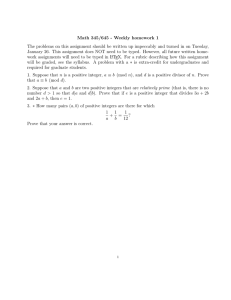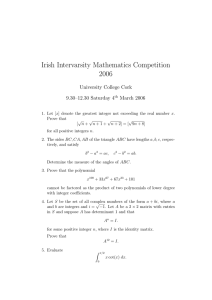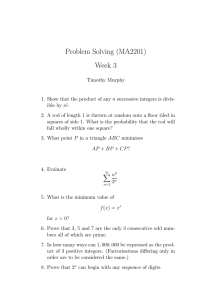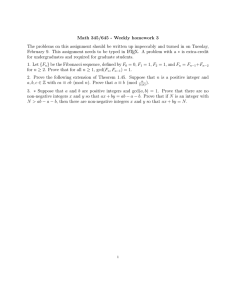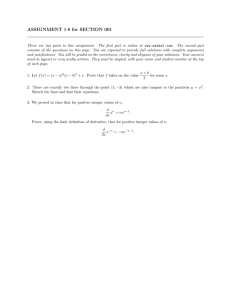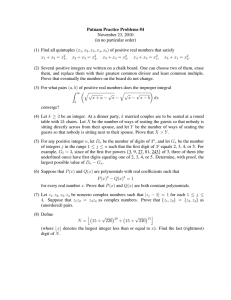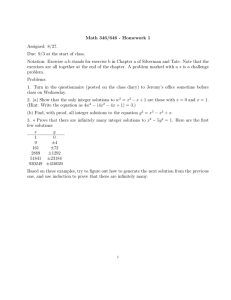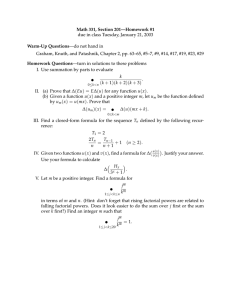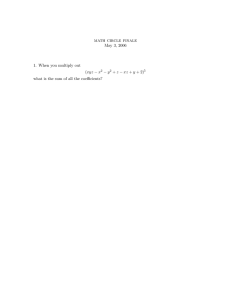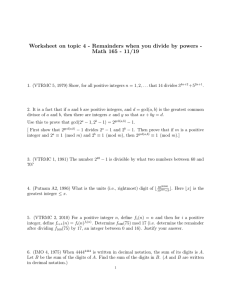Mathematics 220 — Fall 2000 — Bill Casselman’s section
advertisement
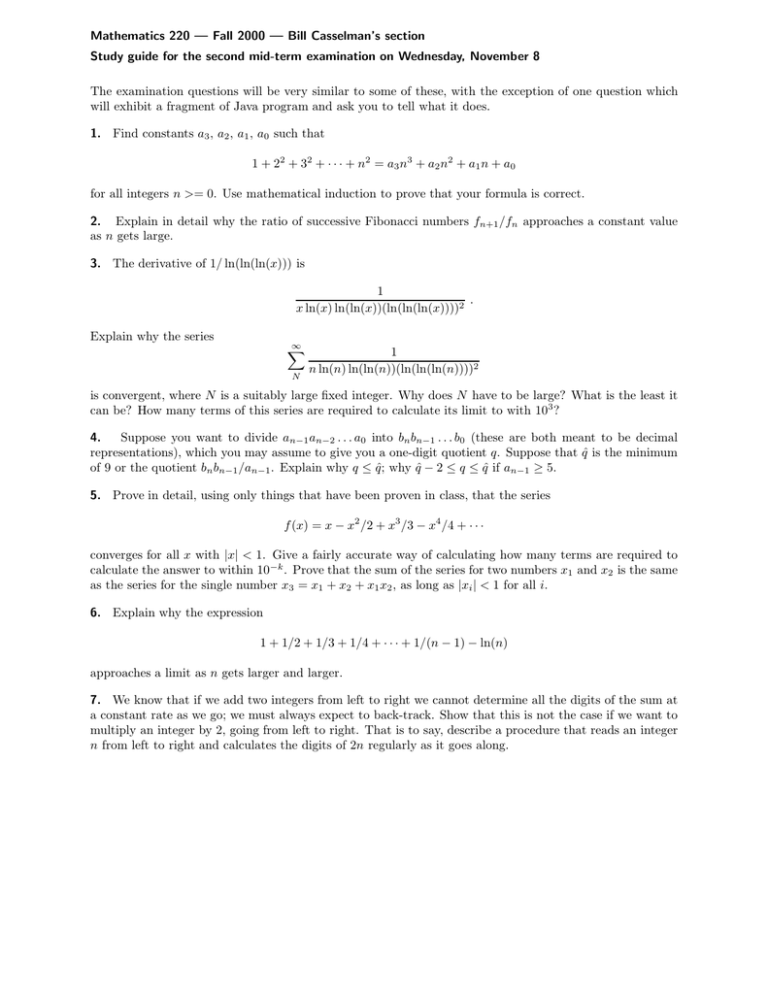
Mathematics 220 — Fall 2000 — Bill Casselman’s section Study guide for the second mid-term examination on Wednesday, November 8 The examination questions will be very similar to some of these, with the exception of one question which will exhibit a fragment of Java program and ask you to tell what it does. 1. Find constants a3 , a2 , a1 , a0 such that 1 + 2 2 + 3 2 + · · · + n 2 = a3 n 3 + a2 n 2 + a1 n + a0 for all integers n >= 0. Use mathematical induction to prove that your formula is correct. 2. Explain in detail why the ratio of successive Fibonacci numbers fn+1 /fn approaches a constant value as n gets large. 3. The derivative of 1/ ln(ln(ln(x))) is 1 . x ln(x) ln(ln(x))(ln(ln(ln(x))))2 Explain why the series ∞ X N 1 n ln(n) ln(ln(n))(ln(ln(ln(n))))2 is convergent, where N is a suitably large fixed integer. Why does N have to be large? What is the least it can be? How many terms of this series are required to calculate its limit to with 103 ? 4. Suppose you want to divide an−1 an−2 . . . a0 into bn bn−1 . . . b0 (these are both meant to be decimal representations), which you may assume to give you a one-digit quotient q. Suppose that q̂ is the minimum of 9 or the quotient bn bn−1 /an−1 . Explain why q ≤ q̂; why q̂ − 2 ≤ q ≤ q̂ if an−1 ≥ 5. 5. Prove in detail, using only things that have been proven in class, that the series f (x) = x − x2 /2 + x3 /3 − x4 /4 + · · · converges for all x with |x| < 1. Give a fairly accurate way of calculating how many terms are required to calculate the answer to within 10−k . Prove that the sum of the series for two numbers x1 and x2 is the same as the series for the single number x3 = x1 + x2 + x1 x2 , as long as |xi | < 1 for all i. 6. Explain why the expression 1 + 1/2 + 1/3 + 1/4 + · · · + 1/(n − 1) − ln(n) approaches a limit as n gets larger and larger. 7. We know that if we add two integers from left to right we cannot determine all the digits of the sum at a constant rate as we go; we must always expect to back-track. Show that this is not the case if we want to multiply an integer by 2, going from left to right. That is to say, describe a procedure that reads an integer n from left to right and calculates the digits of 2n regularly as it goes along.

